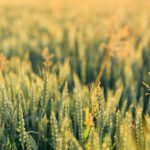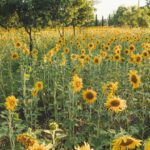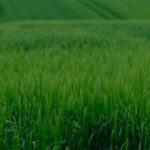Unveiling Europe’s Agricultural Landscape: Which Country Holds the Most Farmland?
When picturing Europe, one might envision grand architectural marvels, rich history, and diverse cultures. However, Europe’s expanse also hosts vast agricultural lands that play a significant role in the continent’s economy and sustenance. The allocation of farmland varies from country to country, sparking curiosity about which European nation boasts the most extensive agricultural territory. In this article, we will unravel this question and provide valuable insights into Europe’s agricultural landscape.
Understanding European Farmland Distribution
Europe’s farmland distribution is a fascinating subject, shaped by historical, geographical, and economic factors. While each country in Europe contributes to the agricultural tapestry, some nations possess more extensive farmland compared to others. The allocation of farmland is influenced by various factors such as climate, soil quality, agricultural policies, and the historical development of agriculture within a particular region.
To determine which European country holds the most farmland, we need to consider land usage for agricultural activities, including crop cultivation, livestock farming, and forestry. These components collectively form the landscape of farmland in Europe.
Factors Influencing Farmland Distribution
Before delving into which European country leads in farmland, it’s crucial to comprehend the factors that influence farmland distribution across the continent. Here are key determinants:
-
Geographical Location: Countries with larger land masses tend to have more extensive farmland due to their geographical size.
-
Climate and Soil: Favorable climates and fertile soils encourage agricultural development, resulting in a higher proportion of farmland.
-
Economic Development: Economic prosperity often correlates with the extent of agricultural development and the size of farmland within a country.
-
Agricultural Policies: Government policies related to agriculture, land use, and rural development significantly impact the allocation and management of farmland.
-
Population Density: The density of the population within a country affects the availability of land for agricultural purposes.
European Countries with Extensive Farmland
While Europe is known for its cultural richness and historical landmarks, it also boasts a diverse agricultural landscape. Several countries stand out for their significant farmland coverage. Here are some European nations renowned for their extensive agricultural territories:
-
France: Known for its vast expanses of fertile land, France ranks among the top European countries with extensive farmland. It is a hub for various crops and vineyards, contributing significantly to Europe’s agricultural output.
-
Spain: With its diverse geography and favorable climate, Spain boasts substantial farmland primarily used for cereal crops, fruits, and vegetables.
-
Ukraine: Though not an EU member, Ukraine holds a prominent position in European agriculture due to its vast fertile lands, particularly in the east and south. It is a major grain producer in the region.
-
Russia: While a significant portion of Russia lies in Asia, its European part comprises extensive agricultural areas. Russia is a major producer of grains, potatoes, and other crops.
-
Germany: Germany, with its blend of arable land, forests, and pastures, ranks high in European farmland distribution. It is a key player in both crop cultivation and livestock farming.
Frequently Asked Questions (FAQs)
Q1: Which European country has the highest percentage of farmland?
The European country with the highest percentage of farmland is Iceland, where nearly 80% of the total land area is classified as agricultural land. However, it’s important to note that Iceland’s agricultural activities are limited due to its harsh climate and challenging terrain.
Q2: How is farmland distributed across the European Union?
Farmland distribution across the European Union varies, with countries like Spain, France, and Germany having substantial agricultural territories. The distribution is influenced by factors such as climate, soil quality, historical land use, and government policies.
Q3: Are there initiatives to promote sustainable agriculture in Europe?
Yes, the European Union has various initiatives and programs aimed at promoting sustainable agriculture. These initiatives focus on sustainable land management, reducing environmental impact, supporting organic farming, and promoting biodiversity within agricultural landscapes.
Conclusion
Europe’s agricultural landscape is a tapestry woven with diverse countries contributing to the continent’s food security and economic prosperity. While nations like France, Spain, Ukraine, Russia, and Germany boast extensive farmland, each European country plays a vital role in shaping the continent’s agricultural fabric. Understanding these dynamics is crucial for appreciating Europe’s agricultural heritage and fostering sustainable practices for the future.
why farmland is a good investment,Is farmland a good investment in us,Can foreigners buy farmland in USA,What country owns the most farmland in us,Can I live in the US if I buy land,How much does 1 acre of farmland cost in USA,What foreign country owns the most farmland,Who owns the most farmland in the world,How much U.S. farmland does Saudi Arabia own,Do you pay tax on land you own in USA,Is it worth buying land in USA,Can I get green card if I buy land in USA,Where is farmland cheapest in us,What state is land the cheapest,Where is the most valuable farmland in the US















